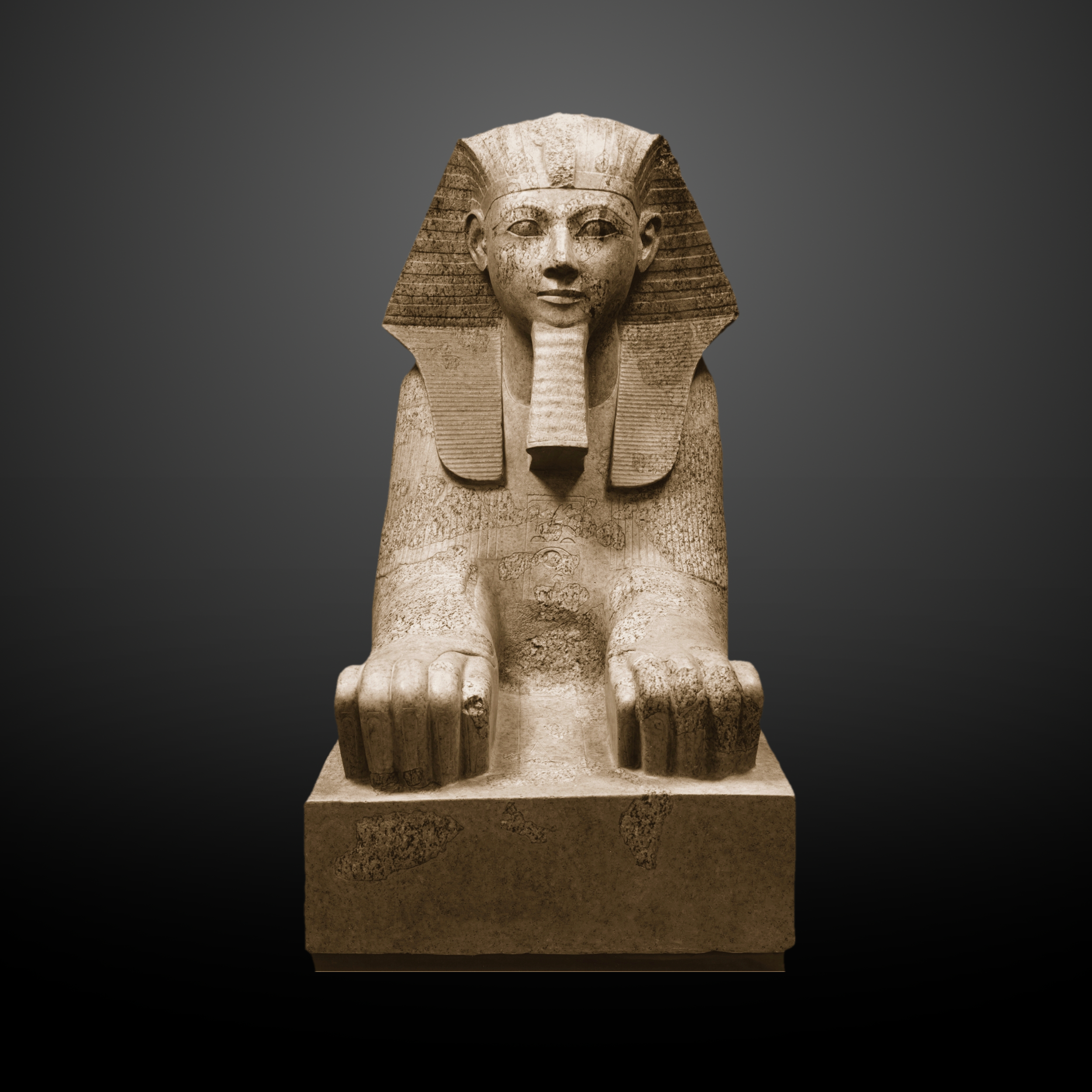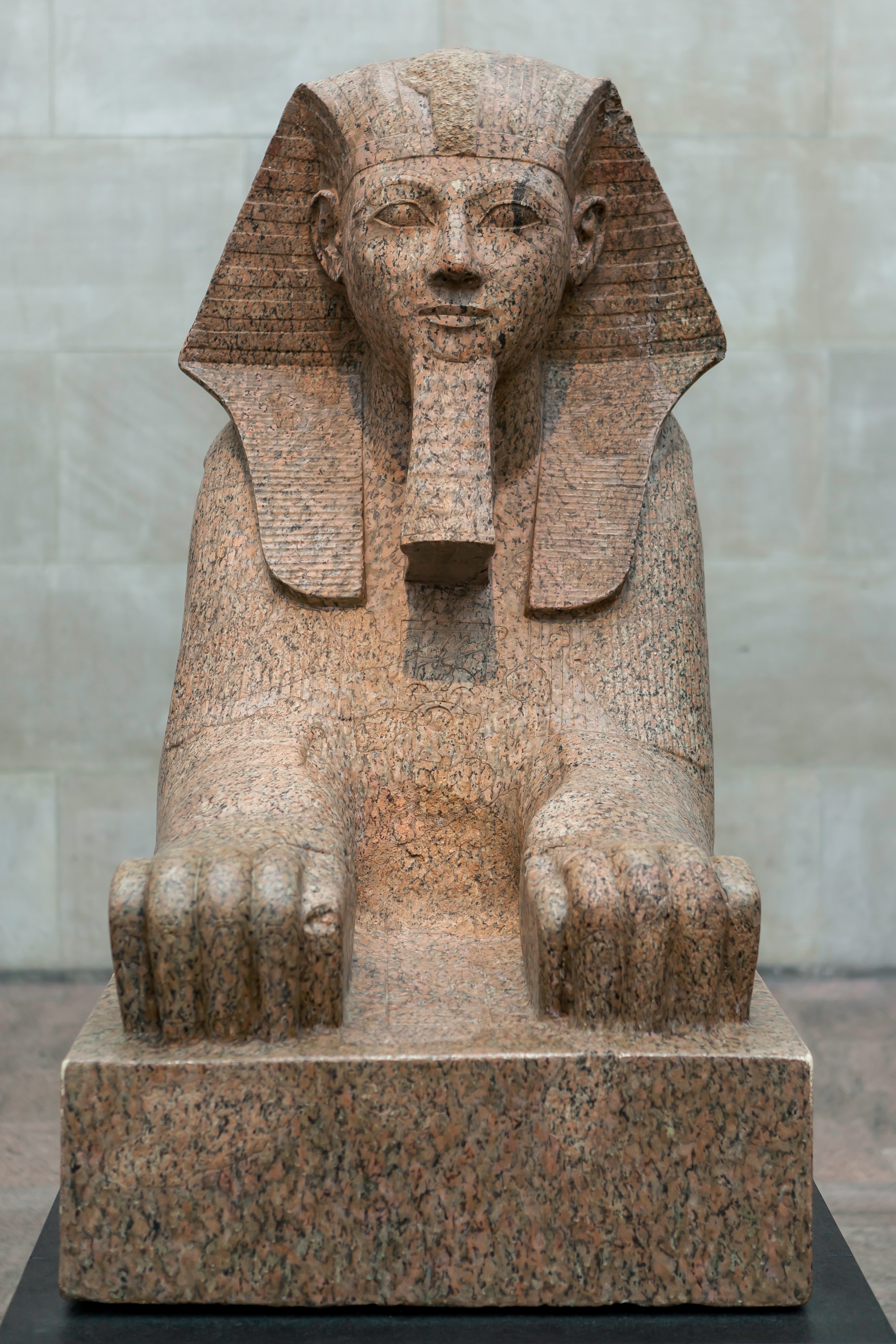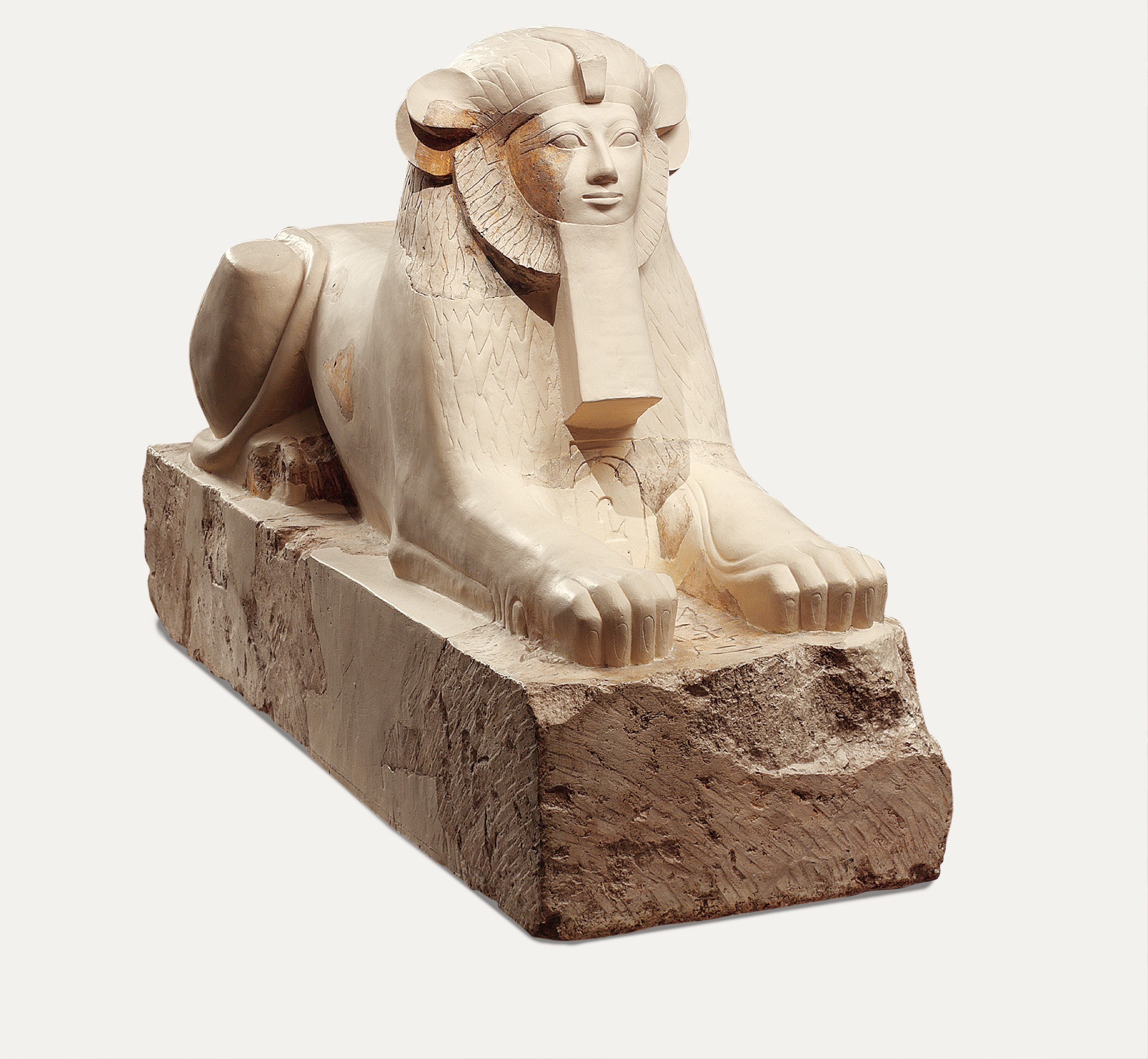The Female Pharaoh Hatshepsut ca. This statue of the female pharaoh Hatshepsut is a prime example of the female kings penchant for blending male and female attributes in her artwork.
Sphinx Of Hatshepsut New Kingdom The Metropolitan Museum Of Art
By Elsie McLaughlin.

. She has the body and mane of a lion with the head of a human. Who was the emperor of rome when jesus was born. It depicts a seated Hatshepsut in female clothing wearing the nemes crown and is inscribed with her pharaonic throne name Maatkare Truth is the Soul of the Sun and feminized versions of her kingly titles Daughter of Re etc.
Measuring 240 feet 73 meters long and 66. The statue represented the idealistic masculine and feminine traits of men and women which King Menkaure and his wife most likely exhibited in their lifetime. These majestic statues depicting the king with a lions body and a human headface are epitomes of the kings might and visual manifestations of his superhuman powers.
Many New World archeologists only accept the Late Paleo-Indian period as substantive proof of New World habitation. The sculpture of the Sphinx of Hatshepsut depicts. A female depicted as a male king.
A female depicted as a male king In Catherine Opies Melissa Lake Durham North Carolina the depiction of gender is. It depicts the pharaoh bare chested in a kilt yet with female facial features and breasts. How did the Feminist artists Judy Chicago and the Guerrilla Girls expand the opportunities and subject matter of art to include women and issues relevant to them.
The sculpture of the Sphinx of Hatshepsut depicts. 1479-1458 BCE the Metropolitan Museum of Art New York. Egyptian art greatly influenced that of early Greece and the Greeks later developed one of the most important styles in Western art.
Sphinx of Hatshepsut from ca. File Sphinx Of Hatshepsut Jpg Wikimedia Commons Fals e True Fals e. The sculpture of the sphinx of hatshepsut depicts.
It depicts the queenking as a sphinx with a lions body and a royal portrait head commanding the entire space with grace and grandeur. The sculpture of the Sphinx of Hatshepsut depicts. Published on 08 July 2017.
The statue has the usual symbolic powerful muscles of the lion and the idealized face used for pharaohs. Art History I Exam I-3. In this life-size statue Hatshepsut is shown wearing the nemes-headcloth and the shendyt-kilt.
It was originally made for Hatshepsuts funerary temple at Deir el-Bahri which is a complex of temples dedicated to pharaohs of her family. Granite Sphinx Statue of Hatshepsut Sphinx statues have a long tradition in Egyptian history the earliest examples dating to the Old Kingdom and the most famous being the great sphinx of Giza. This limestone and plaster piece depicts the female pharaoh Maatkare Hatshepsut as a sphinx.
Two of these statues depicts her unequivocally as a. The statue had been carved using greywacke which is a type of sand stone prized for its hardness and dark color. 14791458 BC is a sculpture of Pharaoh Hatshepsut as a sphinx made of granite that is attached to a rectangular base on the bottom.
Carved between the paws of the statue is a cartouche enclosing the pharaohs throne name Maatkare Truth is the Soul of the Sun c. She wears the same ceremonial costume as male pharaohs including a false beard and a striped royal headcloth that was originally painted blue and yellow and featured a symbolic protective cobra known as the. False There are no artworks that consciously counter stereotypical representations by showing men as vulnerable and women as powerful.
The Great Sphinx of Giza is a giant 4500-year-old limestone statue situated near the Great Pyramid in Giza Egypt. In this sculpture the pharaoh Hatshepsut the first important female ruler known to history is shown as a sphinx a guardian figure with a human head and a lions body. A female dedicated as a male king In Catherine Opies Melissa Lake Durham North Carolina the depiction of gender is made ambiguous for what reason.
On view at The Met Fifth Avenue in Gallery 131. On view at The Met Fifth Avenue in Gallery 115. ART 100 Midterm Ch.
This odd combination is evident in a red granite piece on display in the Metropolitan Museum of Art in New York. Another seated statue from. King Tut disguised as Nefertiti.
This colossal sphinx portrays the female pharaoh Hatshepsut with the body of a lion and a human head wearing a nemes headcloth and false beard. These are part of the ceremonial attire of the Egyptian king which was traditionally a mans role. This seven-ton granite Sphinx of Hatshepsut has the body of a lion and a human head wearing a head-cloth and royal beard.
The sculpture of the Sphinx of Hatshepsut depicts. This graceful life-size statue depicts Hatshepsut in female attire but she wears the nemes headcloth a royal attribute usually reserved for the reigning king. A male pharaoh depicted as a woman.
The sculpture of the Sphinx of Hatshepsut depicts. What the artists looked like and experienced on a personal level. A female depicted as a male king.
The sculptor has carefully observed the powerful muscles of the lion as contrasted to the handsome idealized face of the. 4 - The Prehistoric. Sphinx of Hatshepsut ca.
This sphinx is one of several granite sphinxes that once stood in Hatshepsuts mortuary temple at Deir el-Bahri.

File Sphinx Of Hatshepsut Jpg Wikimedia Commons

File Sphinx Of Hatshepsut Met 31 3 166 F White Jpg Wikimedia Commons

File Sphinx Of Hatshepsut Met 31 3 166 F Gradient Jpg Wikimedia Commons

Sphinx Of Hatshepsut New Kingdom The Metropolitan Museum Of Art

Sphinx Of Hatshepsut Illustration World History Encyclopedia

Sphinx Of Hatshepsut New Kingdom The Metropolitan Museum Of Art

Sphinx Of Hatshepsut New Kingdom The Metropolitan Museum Of Art

Sphinx Of Hatshepsut New Kingdom The Metropolitan Museum Of Art
0 comments
Post a Comment